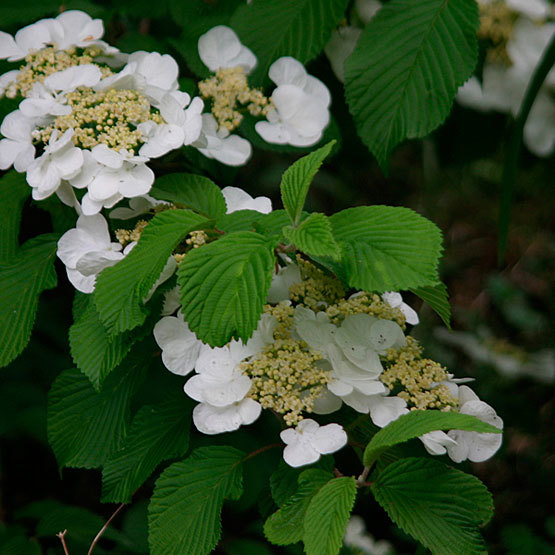
This genus contains at least 150 species of evergreen, semi-evergreen, and deciduous shrubs (mostly) and trees that are cultivated for their attractive flowers, fruit, and foliage. Leaves are often rough and veiny, turning pleasing colors in the autumn. Flowers are white, pink, or cream, and sometimes fragrant. Fruit is red, blue, or black, and usually spherical. Viburnums are useful in a shrub border or woodland garden. Many species attract wildlife.
Noteworthy CharacteristicsMany species have good fall color, fragrant flowers, and ornamental fruits. Some viburnums make good wildlife plants. Fruit may cause mild stomach upset if eaten.
CareGrow in most any type of moderately fertile, moist but well-drained soil in full sun or partial shade. Prune evergreen species when dormant by removing branches that disrupt the permanent, healthy framework. Prune deciduous viburnums annually, after flowering.
PropagationTake greenwood cuttings of deciduous viburnums, and semi-ripe cuttings of evergreen viburnums, in summer. Sow seed in autumn in a cold frame or seed bed.
ProblemsGray mold, rust, mildews, wood rot, verticillium wilt, leaf spots, and die back occur, while aphids, scale insects, weevils, Japanese beetles, mealybugs, and tree hoppers are common.






























